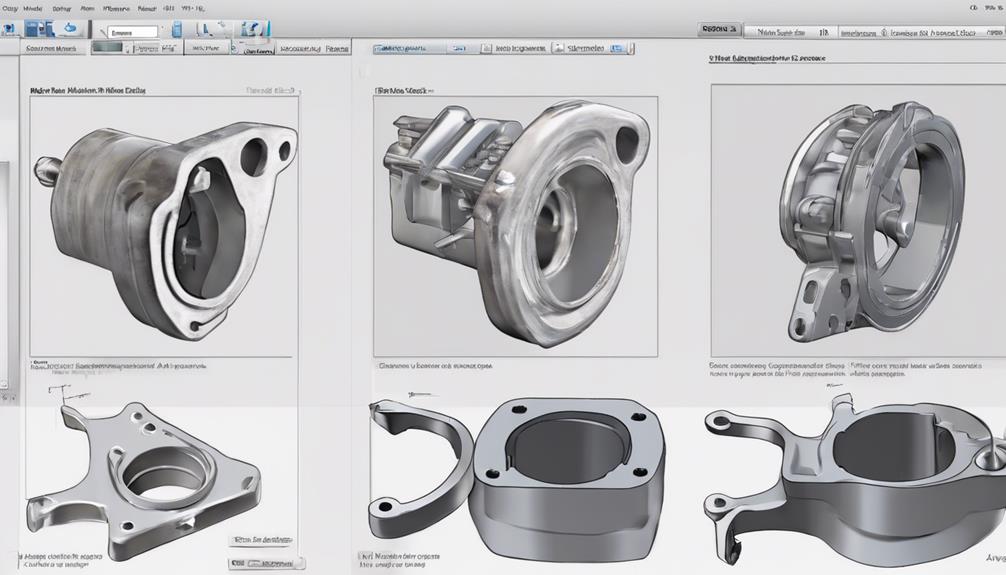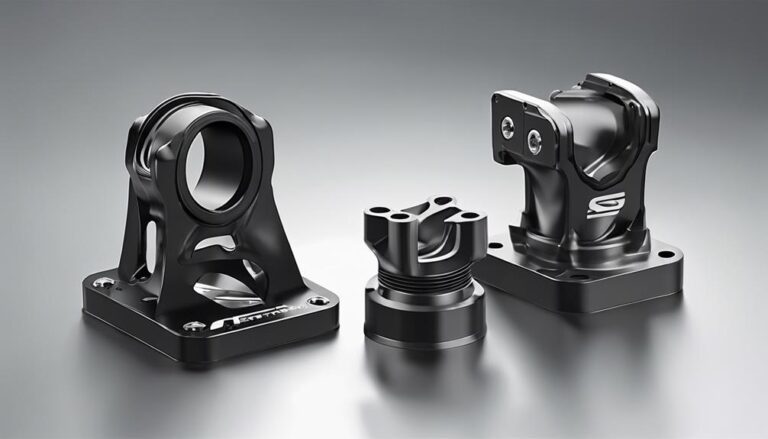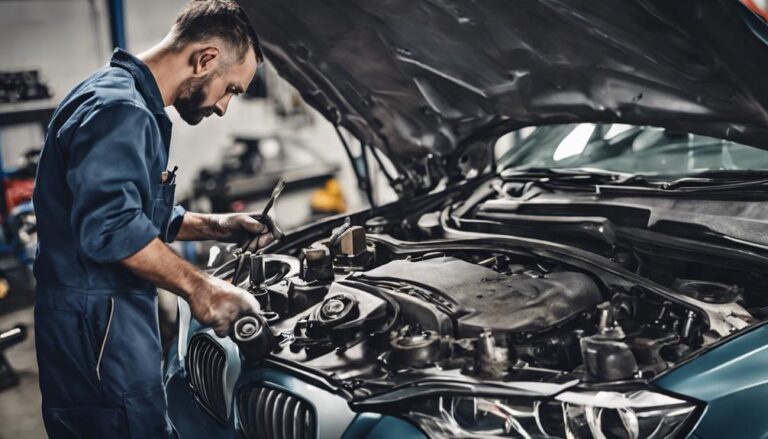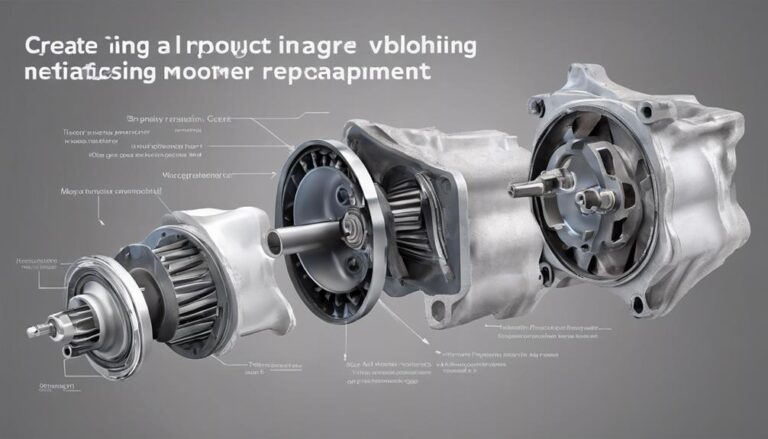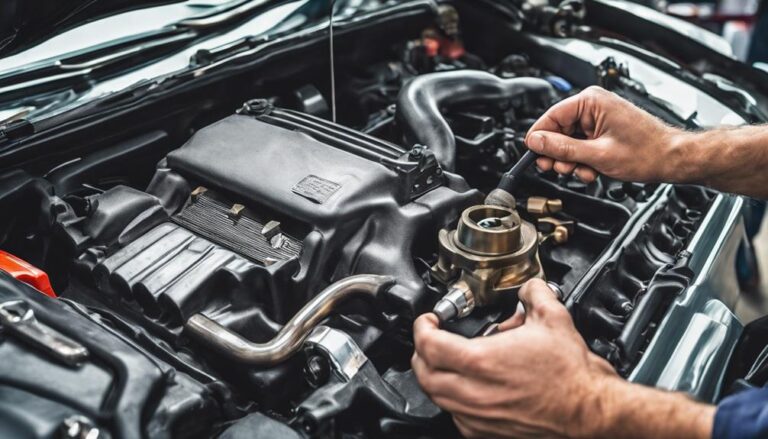Why Are Engine Mounts and Motor Mounts Different?
Did you know that on average, engine mounts and motor mounts differ in design and functionality?
Engine mounts and motor mounts serve similar purposes in supporting the engine of a vehicle, yet they are not interchangeable parts. Understanding the distinctions between them is important for ensuring peak performance and longevity of your vehicle.
Stay tuned to uncover the underlying reasons behind why these components are not one and the same, shedding light on the intricacies of automotive engineering.
Key Takeaways
- Engine mounts support combustion engine torque and dampen vibrations.
- Motor mounts accommodate electric motor characteristics and prioritize vibration isolation.
- Metal mounts offer durability and strength, while rubber mounts enhance driving comfort.
- Engine mounts are costlier, have a longer lifespan, and focus on noise reduction.
Engine Mount Vs. Motor Mount: Overview
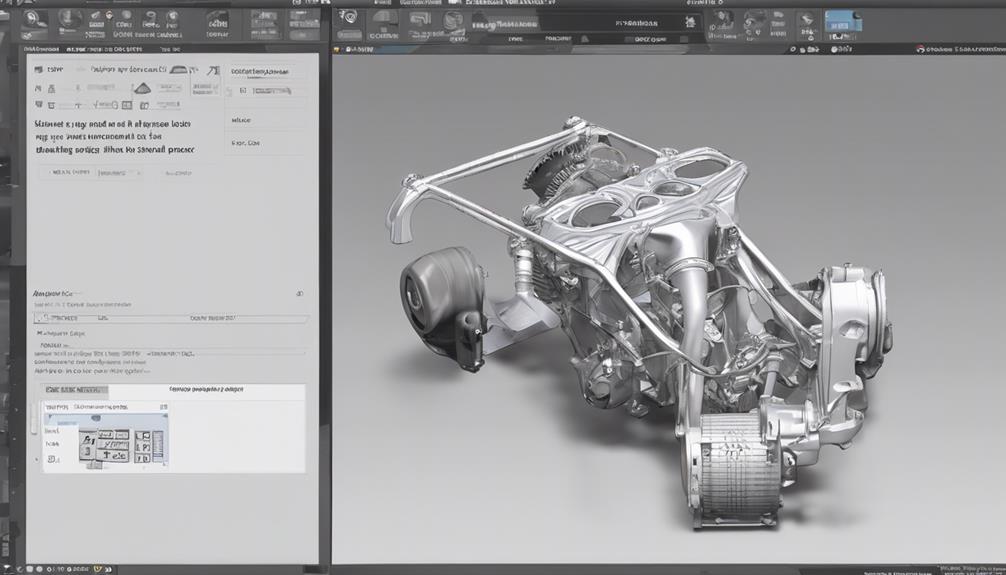
Differentiating between engine mounts and motor mounts can be essential for understanding the mechanical dynamics of a vehicle. Engine mounts are strategically located components that connect the engine to the chassis of the vehicle. These mounts are important for minimizing vibrations and reducing noise transmission from the engine to the rest of the vehicle. On the other hand, motor mounts are specific components designed to support the weight of the motor and maintain its position within the vehicle's engine bay.
Structural differences between engine mounts and motor mounts are evident in their design variations. Engine mounts are often more robust and built to withstand the intense vibrations generated by the engine during operation. In contrast, motor mounts are engineered to provide stability and support to the motor while allowing for some degree of movement to accommodate engine torque and vibrations. These design variances have significant performance implications, affecting factors such as ride comfort, noise levels, and overall vehicle stability. Understanding these distinctions can help you appreciate the intricate interplay between engine mounts and motor mounts in your vehicle's mechanical system.
Material Differences in Mounts
When considering the structural composition of engine mounts and motor mounts, one of the key factors to analyze is the material variance between these important components. Engine mounts are typically made of metal, offering robust support and durability, while motor mounts commonly use rubber due to its vibration-dampening properties. This material difference plays a vital role in the performance and functionality of each type of mount.
Here is a breakdown of the metal vs. rubber debate in the context of these mounts:
- Metal Engine Mounts:
- Provide excellent stability and strength.
- Offer high resistance to wear and tear.
- Rubber Motor Mounts:
- Absorb vibrations effectively.
- Enhance overall driving comfort.
The performance comparison between metal and rubber mounts showcases a trade-off between durability and vibration isolation. While metal mounts excel in providing robust support, rubber mounts shine in reducing vibrations and enhancing the driving experience. The choice between these materials depends on the specific requirements of the vehicle and the desired balance between strength and comfort.
Functionality Variances in Car Support
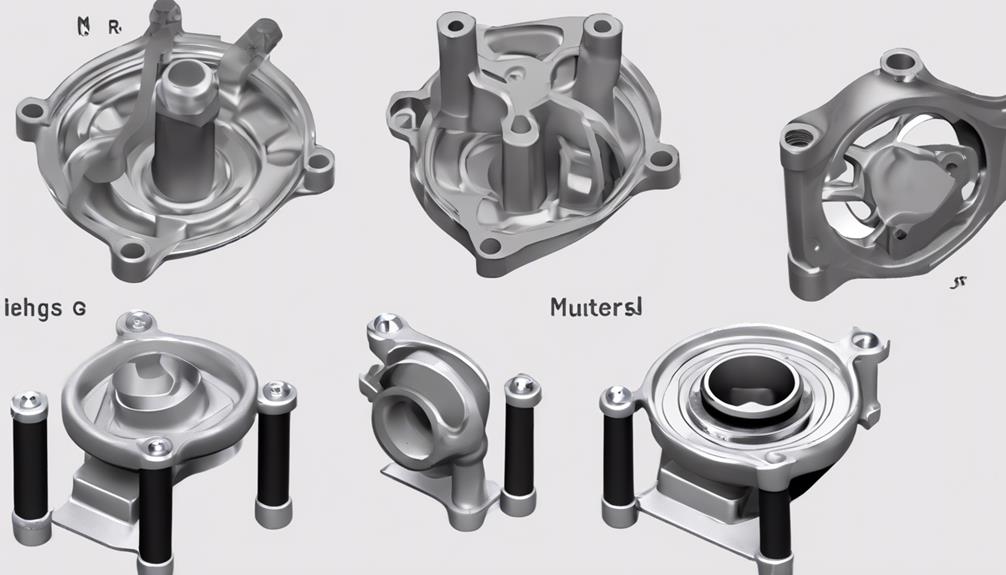
To comprehend the functionality variances in car support, analyzing the design and placement of engine mounts and motor mounts is crucial. Engine mounts are typically designed to bear the weight of the engine and dampen vibrations produced during operation. These mounts are strategically placed to support the engine and maintain its position within the vehicle chassis, ensuring efficiency and reducing noise transmission.
On the other hand, motor mounts are responsible for supporting the electric motor in electric vehicles or the combustion engine in traditional vehicles. The structural differences between engine mounts and motor mounts lie in their specific designs to accommodate the different powertrains. Performance comparisons show that engine mounts are often sturdier to withstand the combustion engine's torque and vibrations, while motor mounts need to be designed with considerations for the electric motor's characteristics.
Understanding these functional variances allows for better selection and maintenance of mounts based on the specific vehicle type and powertrain, ensuring efficiency and longevity.
Installation Variances and Considerations
Consider the structural compatibility between the vehicle chassis and the mounting components to guarantee peak performance and longevity. When installing engine mounts or motor mounts, certain challenges may arise that need to be addressed for peak function.
Here are some key considerations to keep in mind:
- Weight Distribution: Make sure that the weight of the engine is evenly distributed across the mounts to prevent excessive stress on any specific point.
- Alignment: Proper alignment of the mounts is essential to maintain the balance of the engine and minimize vibrations.
- Tightening Torque: Follow manufacturer specifications for the correct tightening torque to prevent over-compression or under-compression of the mounts.
- Inspection: Regularly inspect the mounts for signs of wear or damage, as installation inaccuracies can lead to premature failure.
Addressing these installation challenges diligently won't only enhance the performance of your vehicle but also contribute to its overall longevity.
Cost Differences and Maintenance Factors
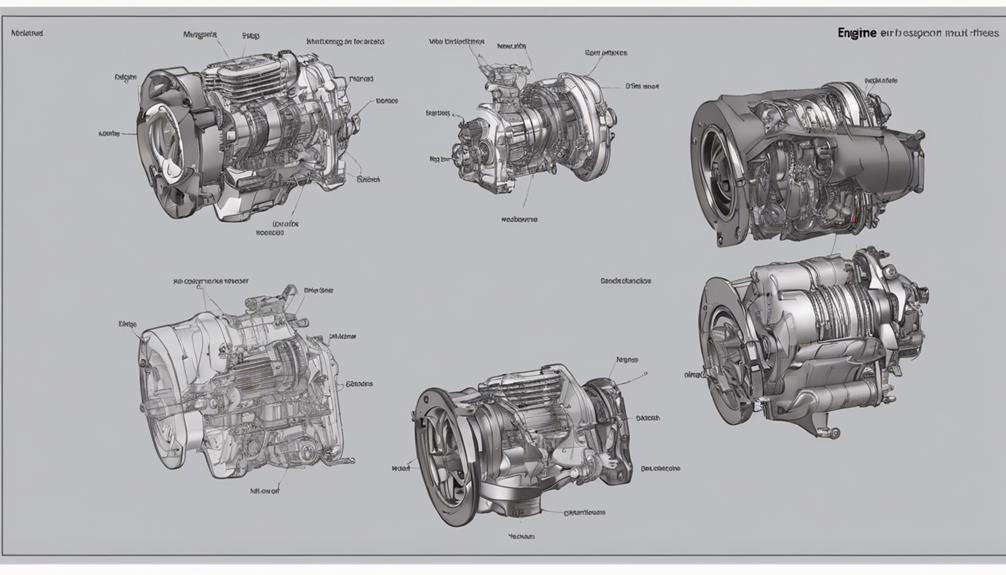
Guarantee proper budgeting for your vehicle's maintenance by comprehending the cost variances and upkeep requirements between engine mounts and motor mounts. When considering cost efficiency, engine mounts tend to be pricier due to their complex design and function. Engine mounts support the entire engine, absorbing vibrations and minimizing noise, which contributes to their higher price point compared to motor mounts. However, this cost disparity is justified by the longevity factors associated with engine mounts. Engine mounts have a longer lifespan than motor mounts, reducing the frequency of replacements and overall maintenance costs in the long run.
On the maintenance front, engine mounts require periodic inspections to make certain they're functioning correctly. Signs of wear and tear, such as excessive vibrations or clunking noises, indicate a potential issue with the engine mounts. Regular maintenance checks are vital to prevent further damage to the engine and surrounding components. In contrast, motor mounts, while more affordable initially, may need more frequent replacements due to their simpler construction and lower durability. Understanding these cost and maintenance differentials is essential for maintaining the best performance and longevity of your vehicle.
Frequently Asked Questions
Can Engine Mounts and Motor Mounts Be Interchangeable in Some Vehicles?
In some vehicles, engine mounts and motor mounts can be interchangeable depending on the installation process and compatibility. Aftermarket options offer benefits like improved performance and durability, but it's important to confirm proper fitment for best functionality.
Are There Any Performance Differences Between Using Engine Mounts and Motor Mounts?
When it comes to performance differences between engine mounts and motor mounts, you may wonder if one offers better vibration reduction or handling improvement. Understanding their material variances and how they affect the installation process can guide your decision.
How Do Engine and Motor Mounts Affect the Overall Driving Experience?
Engine and motor mounts play crucial roles in enhancing your driving experience. They improve driving comfort by controlling vibrations and reducing noise. Additionally, they contribute to better handling, ensuring a smoother and more enjoyable ride.
Are There Any Safety Implications to Consider When Choosing Between Engine and Motor Mounts?
When choosing between engine and motor mounts, safety considerations are essential. Ensuring compatibility minimizes risks. Think of it like fitting puzzle pieces – the right match guarantees stability, reducing potential hazards on the road.
Can Upgrading Engine or Motor Mounts Improve Vehicle Performance or Longevity?
Improving engine or motor mounts can greatly enhance your vehicle's performance and durability. Compatibility issues and installation discrepancies may arise, so make sure proper fitment and professional installation for best results.
Conclusion
To conclude, the distinction between engine mounts and motor mounts lies in their design and function. While both provide support for the engine, the material used, functionality, installation process, and maintenance requirements vary greatly.
It's essential to understand these differences to guarantee proper performance and longevity of your vehicle. Remember, 'the devil is in the details' when it comes to selecting the right mount for your car.

